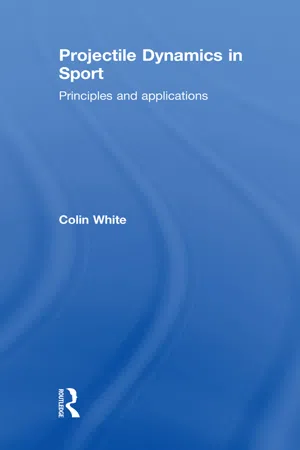1.1 Introduction
Science and the study of the motion of bodies have been inextricably linked since the earliest foundations of academic studies. When the cave dwellers threw stones in battle, or to obtain food, they must have had some gut feeling for the trajectory path the stone would take once it left their hand. At the very least, they must have known that the harder it was thrown, the further it might go. One suspects that, by means of pure practice alone, they may have achieved superbly accurate and powerful shots, in much the same way as South American rainforest tribes wield a blowgun with such devastating precision. It is most unlikely, in either of these cases, that a profound understanding of the mathematical equations that underlie the motion of the projectiles would improve their skills.
As time progressed and weaponry evolved, ingenious lever-type devices came into play, utilising a range of mechanical catapult or slingshot actions. Projectile paths were now replicable and could be varied by means of mechanical adjustment. A mathematical study of the projectile motion, once it left the appliance, became an essential component in the overall weapon design strategy, allowing predictions of performance and target accuracy prior to the machine’s operation in anger (so to speak!). The earliest catapults could fire a 20 kg stone maybe up to 40 m. Later, the Trebuchet was developed; a highly advanced slingshot machine designed to destroy fortifications. It could fire stones of 120 kg a distance of up to 200 m. Most significantly though, a good degree of accuracy was attainable by means of a counterbalancing torque action, which ensured the weapon’s stability during the enormous forces created through the firing action.
As a point of interest, stones were not the only missile to be flung from these magnificent contraptions; sometimes, disease-infected corpses were flung into cities in an attempt to infect the people under siege. This may be the earliest record of biological warfare!
Today, modern superguns can fire unpowered shells over a hundred miles with some degree of accuracy. Actual up-to-date specifications are hard to come by for obvious reasons, but it is thought that work is afoot to produce weapons that can fire unpowered ammunition into space where it will orbit and return where and when required.
The earliest recorded analysis of ballistic motion, known as ‘Impetus Theory’, was derived from the field of Aristotelian dynamics. Its main premise stated that an object shot from a cannon, for example, follows a straight line until it ‘lost its impetus’; at which point, it fell abruptly to earth (coincidentally, rather similar to the flight path of a back-spun, driven golf ball). The argument stated that: all motion against resistance requires some ‘mover’ to supply a continuous motive force. Of course, in the case of a launched projectile, such a mover is not present, and so Aristotle postulated an alternative auxiliary theory, stating that the mover was provided by the launcher itself. It was then transferred into the projectile at the point of launch, ready to operate once it was in flight. Key to this is the erroneous assumption that the projectile movement is not mediated by the medium through which it moves.
Various modifications to the Aristotelian Impulse Theory ensued over many centuries in an attempt to bring the mathematical analysis in line with observations, but it was not until Galileo created his seminal work, published in 1638, the Dialogues of the Two New Sciences. Here, in the second half of the book, he took up the question of projectile motion. Aristotle had approached the problem from the point of view of the origins, causes and effects of projectile motion. By contrast, Galileo ignored these characteristics, in favour of focusing on the measurable quantities, such as weight, time, velocity and acceleration. When he dropped a stone from his hand, for example, he did not concern himself with why it fell, more that it fell such that the square of the time of flight was proportional to the height of fall. He knew that, for this to happen, a vertical force must be acting on the stone. He ignored why that should be and calculated its value, by experiment, to be 9.8 m s2. Perhaps this was his first major insight into the field of trajectory modelling; the ability to model nature’s movement by pure mathematical symbols. In The Assayer he wrote:
His second essential insight in the field came from his prior work on connected bodies. He had stated that, if one body carries another, the carried ...
